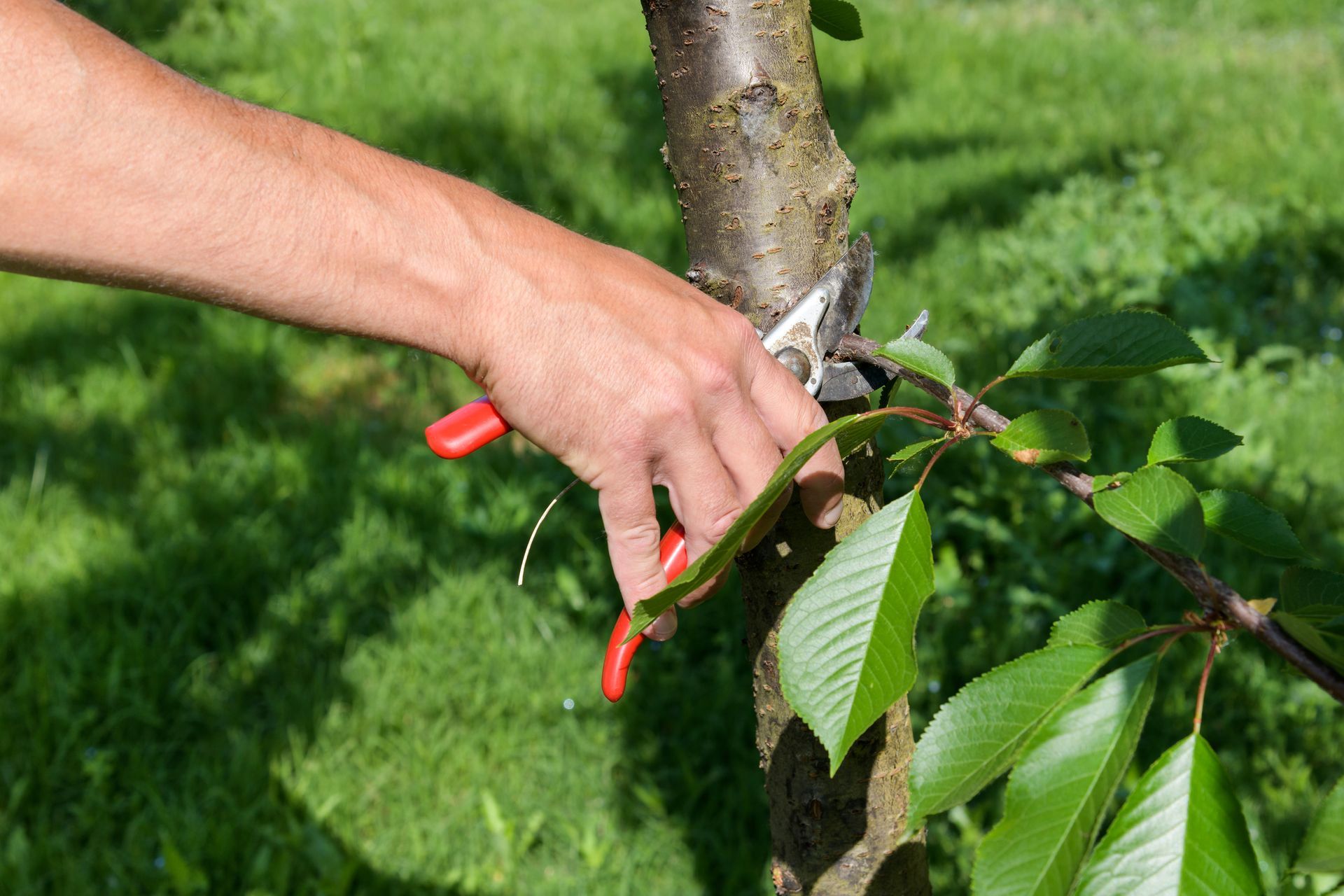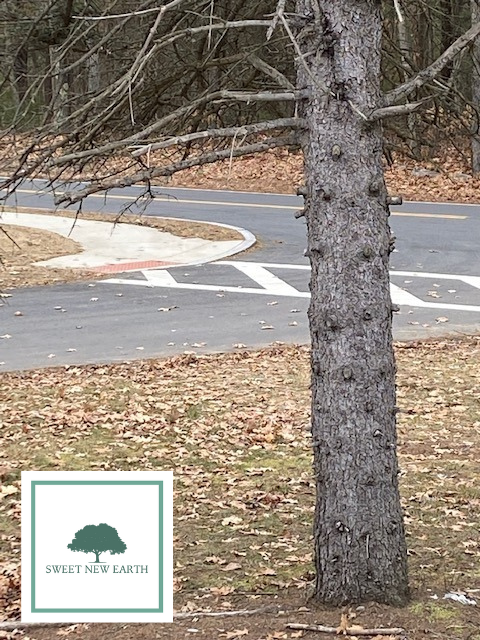Should You Trim Lower Tree Branches?

You should not trim lower branches on your trees. Removing the lower branches can stop new growth and reduce the energy that goes into the tree, leaving it vulnerable to pests, diseases, and environmental stressors.
Trimming lower branches can cause the tree's roots to become exposed, lowering the tree's ability to absorb water. It also interferes with its natural balance of nutrients.
Not only that, but it can also create an aesthetic problem. Cutting off lower branches can create an unsightly, lopsided appearance that detracts from the tree's beauty. So, cutting lower branches off trees is a no-do unless you really need to.
Table of Contents
Important Things to Know About Cutting Lower Branches Off Trees
In some cases, cutting off a lower tree branch from your tree might be inevitable. For example, if a lower branch is diseased, dead, or dying, it should be removed to prevent disease and further damage.
Before you do that, you must know how to trim low hanging tree branches. Here are the most important things to keep in mind:
- Don't remove too much
- Use Proper Pruning Technique
- Don't Trim Too High
- Give It Time To Recover
- Avoid Power Tools If Possible
- Trim At The Right Time of Year
- How To Prune Side Shoots or Suckers
- Mulch The Base of the Tree
- Remove Dead Branches
WARNING: Under no circumstance do we recommend you trimming off the lower branches of your tree without proper experience. Do not trim a tree unless you are a trained professional.
Don't Remove Too Much
You should not cut any more than ⅓ of the tree's height. For example, if your tree is 60 feet tall, you should only remove branches up to 20 feet from the ground. If you cut any more than that, it can put the tree in a state of shock and damage its structure.

Use Proper Technique
When cutting off a lower tree branch, use a technique called "crown cleaning." It involves cutting the branch at its base with an angled cut that slopes away from the trunk. It prevents damage to the branch collar, which helps with recovery.
Not Too High
If you trim the tree too much, it will raise the canopy. It's best to trim only 10% of the tree, with 20% being the maximum. Any more than that, and you'll be left with an ugly-looking tree.
Let The Tree Heal
After trimming lower branches, give the tree some time to heal and recover. Give it a few weeks before trimming any more branches.
Avoid or Be Careful With Power Tools
Don't get your saw or power trimmer out unless you know what you're doing. You can easily damage your tree if not used correctly. Use a saw with a fine-toothed blade to make clean and precise cuts.
Trim At The Right Time
When cutting lower branches off a tree, get the timing right. For example, do not prune oak trees from February to June. Otherwise, oak wilt disease can spread.
Also, make sure to prune when a tree is in its dormancy period. Pruning during this period, typically late fall or winter, is best as it won't interrupt the tree's natural growing process.
The best time for cutting lower branches off pine trees is in spring. Likewise, the best time for cutting lower branches off apple trees is early spring. During this time, the cuts heal quickly, and the tree remains healthy.
Do not trim low hanging branches during summer, as it results in sun-scald. When you cut the lower tree during the summer, the bark warms up quickly and becomes vulnerable to sunburn.
However, some trees are an exception to this. For example, the best time for trimming lower branches on maple trees is in mid-summer. So, you should select the trimming time based on the tree's requirements and growth pattern.
Don't forget to consider the weather conditions before trimming lower branches. On days with high winds, postpone the project to another day as it can be dangerous.
Pruning Side Shoots or Suckers
Don't work with a saw or pruning shear for side shoots and suckers. Use scissors or pruners instead, as they're more precise when you want to cut off small branches. If you're not sure which branches to cut, start with the ones closest to the trunk. Be careful when pruning young trees.
Mulch The Base Of The Tree
When you're finished cutting lower branches off a tree, put some mulch at the base. It will help retain moisture in the soil, preventing drought-like conditions. It promotes a healthy root system and can even prevent weed growth.
When applying mulch, make sure to keep it away from the tree's trunk. If applied too close, fungi and other diseases can develop on the bark.
Remove Dead or Diseased Branches
While there's a right pruning time for every kind of tree, you should cut off any diseased branches immediately. If you identify a portion of the tree that looks unhealthy, remove it as soon as possible.
Dead branches can also be removed at any time as they're not beneficial to the growth of a tree. Meanwhile, diseased branches can spread and weaken the tree if left unattended.
On top of that, you gotta watch out for falling branches and other hazardous branches. Anytime you have floating branches stuck up in the tree, strong winds can blow them right to the earth.
Removing Lower Branches or Low Hanging Branches
When pruning a tree with long hanging branches, you should know how to do it right.
Trimming Lower Branches
Here's a three-step process:
- Make three cuts when removing a lower branch from the tree. The first cut should be ¼" in depth on the underside of the branch. Make sure it's at a distance of up to 3 feet from the tree trunk.
- Now, cut a foot further out, at a 45-degree angle that faces away from the trunk.
- Make the last cut close to the collar of the branch—this is the area where the branch meets the trunk. Remove any remaining stub after making this cut so that it's flush with the trunk.
Trees With Lower Hanging Branches
When trimming a low-hanging branch, you should remove as little of the limb as possible. Start by cutting off only a few inches from the end, making sure to leave some foliage on the branch.
It's also important to leave some of the top foliage so that new growth can emerge. Trim only a little bit at a time until the branch reaches a height that you're satisfied with.
FAQs
Before you go...
Thank you for stopping! Now that you know why you probably shouldn't be removing lower tree branches, you might be interested to know... there are way worse pruning cuts you can make to your tree. Be sure to read our next article so you avoid any rookie mistakes when it comes to pruning your tree...
Related Articles:

Carl Anderson
Carl Anderson is an avid outdoorsman with a keen interest in writing about and reviewing tools. He has over 20 years of writing experience and the only time he isn't feverishly typing away at his computer is when he's outside in nature working on his projects. You can learn more about him here.
Join our community!
Join to receive guides, insights, and the latest gardening deals!
